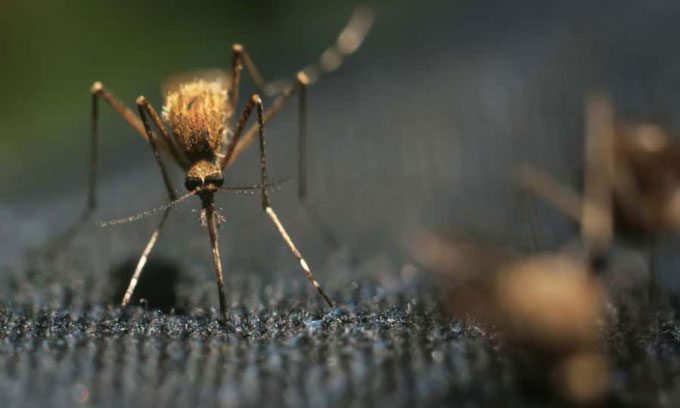A new knitted fabric designed specifically to prevent mosquito bites from penetrating the skin while remaining comfortable to wear.
John Beckmann, a researcher at Auburn University in Alabama, began developing mosquito-repellent clothing after his purchased clothing for a cruise proved ineffective, New Scientist reported on May 13. “I was eaten alive,” he shared.

Mosquitoes can pierce through many types of fabric. (Image: Borkin Vadim).
Any clothing thicker than the length of a mosquito’s proboscis will help prevent bites, but such clothing is not suitable for warm climates where mosquitoes thrive.
In a recent study published on the bioRxiv database, Beckmann and his colleagues tested the bite-resistant capabilities of several popular clothing brands. Volunteers wore these outfits and then placed their arms in a mosquito enclosure to count the number of bites. No woven fabric in the test could resist mosquito bites, but a certain knitted fabric showed some level of resistance.
Knitted fabric consists of many interlinked loops of yarn rather than woven threads. Many garments are made from micro-knitted fabrics, produced by machines that can be programmed to knit in various patterns.
The research team discovered a knit pattern called interlock (interlocking loops of yarn) that can prevent bites. They found that increasing the yarn thickness and reducing the length of the knit stitch further enhanced this capability. Increasing the ratio of spandex to cotton or polyester was also beneficial. The research team noted that their mosquito-repellent fabric could block bites from at least two species: the smaller Aedes aegypti mosquito and the much larger Psorophora howardii.
When mosquitoes begin to pierce the fabric with their proboscis, the loops of yarn close up and prevent the proboscis from reaching the skin, according to Beckmann. Some knitted fabric samples created by the research team were stiffer than standard fabrics, but they found one sample that offered comparable comfort. The technology is patented by Auburn University, and the research team plans to license it to clothing companies.
“If I could buy a shirt that has the same comfort and price point while preventing mosquito bites, I would definitely prefer that shirt,” Beckmann said.
Beckmann is unsure of the rate of bites through clothing compared to bare skin, but he hopes the new fabric will significantly reduce the spread of mosquito-related diseases such as dengue fever, Zika, and malaria. Beckmann also plans to test whether the mosquito-repellent knitted fabric can help against other insects like fire ants and flies.


















































